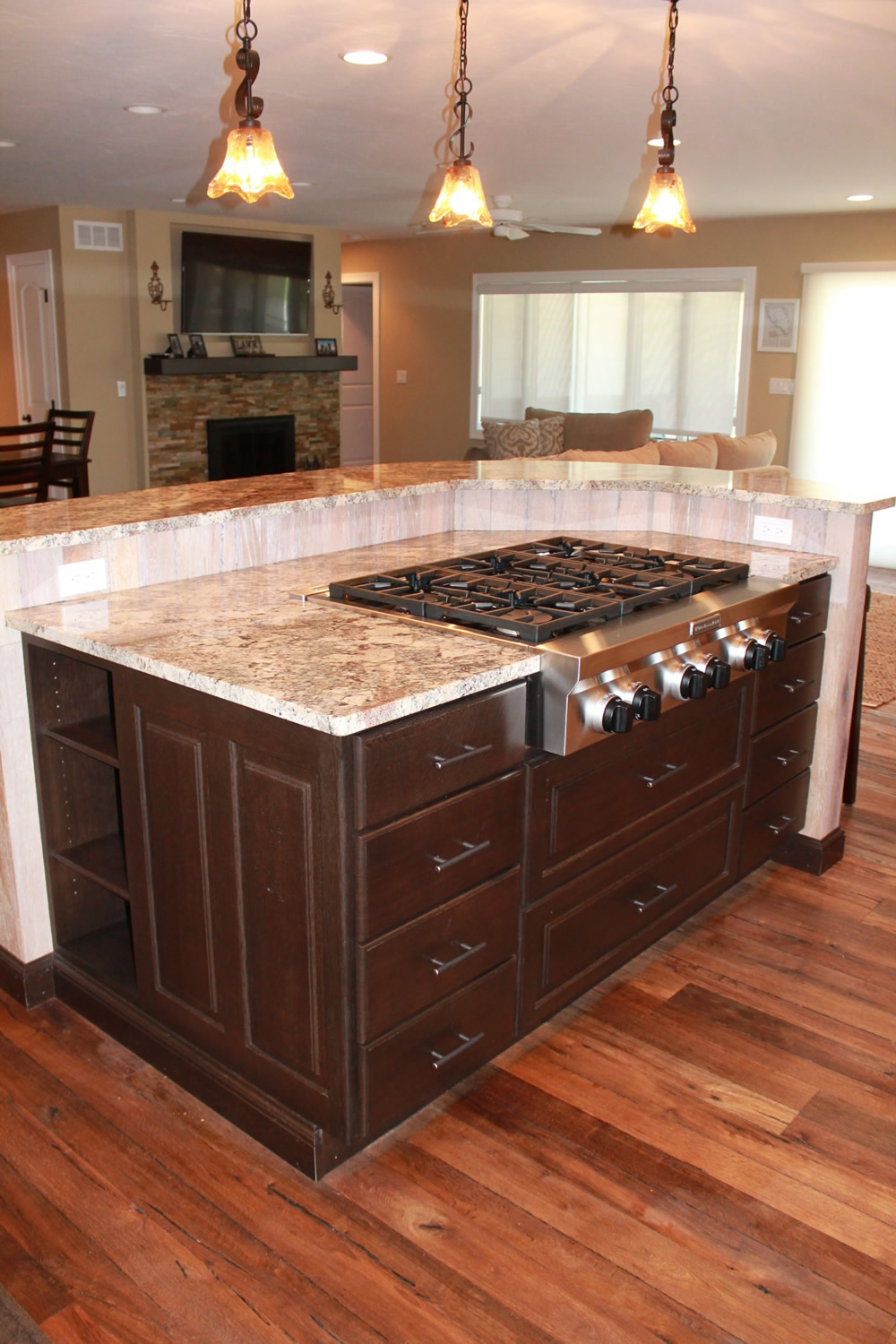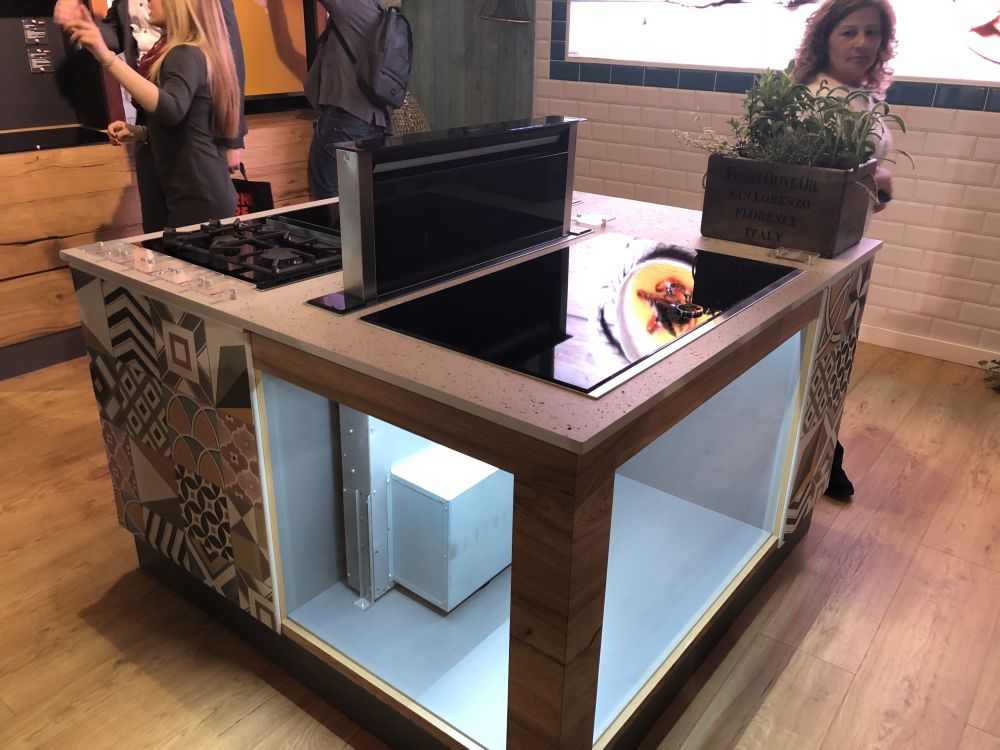Island Stove: A Stylish and Functional Addition to Your Kitchen
I. Introduction to the Island Stove

An island stove is a cooktop or range that is installed in the center of a kitchen island. It offers numerous benefits in terms of both functionality and aesthetics.
A. Benefits of an Island Stove
- Enhanced Kitchen Workflow and Efficiency: Placing the stove in the center of the kitchen allows for a more efficient workflow as it eliminates the need to constantly move between different stations. This setup makes it easier to access cooking utensils, ingredients, and other kitchen tools.
- Aesthetically Pleasing and Versatile Design: An island stove serves as a focal point in the kitchen, adding a stylish and modern touch to the overall design. It can be customized to match the aesthetic of the kitchen, whether it’s a sleek and minimalist look or a more traditional and rustic style.
B. Factors to Consider
Before Installing an Island Stove Before deciding to install an island stove, there are a few factors that need to be taken into consideration.
- Space and Kitchen Layout: The first consideration is the available space and the layout of the kitchen. An island stove requires sufficient space to accommodate both the stove itself and the necessary ventilation system. It’s important to ensure that there is enough space for comfortable movement around the stove.
- Ventilation and Safety Requirements: Proper ventilation is crucial when installing an island stove. The stove generates heat, smoke, and odors, which need to be effectively removed from the kitchen. It is important to ensure that there is an appropriate ventilation system in place to maintain good air quality and prevent the buildup of grease and cooking residue.
II. Island Stove Design Options

When choosing an island stove, there are several design options to consider.
A. Gas or Electric Island Stove
- Pros and Cons of Gas Stoves: Gas stoves offer precise temperature control, which is particularly useful for cooking techniques that require specific heat levels. They also provide instant heat and are often preferred by professional chefs. However, gas stoves require a gas line installation and can be more expensive to operate.
- Pros and Cons of Electric Stoves: Electric stoves are easier to clean and maintain, as they typically have a smooth, glass surface. They also offer more advanced features such as induction heating and touch controls. However, they can be slower to heat up and cool down compared to gas stoves.
B. Size and Configuration
- Choosing the Right Size for Your Island Stove: The size of the island stove should be determined by the available space and the cooking needs of the household. It’s important to strike a balance between having enough cooking surface area and not overpowering the kitchen island.
- Single vs. Multiple Burners and Oven Options: Depending on the cooking requirements, one can choose between a single large burner or multiple burners. Additionally, some island stoves come with built-in ovens, providing further cooking versatility.
III. Installation and Placement of an Island Stove

Proper installation and placement of the island stove are crucial to ensure safety and optimize functionality.
A. Electrical and Gas Connections
- Hiring a Professional for Proper Installation: It is highly recommended to hire a professional for the installation of an island stove. They will ensure that the electrical and gas connections are properly installed and meet all safety requirements.
- Ensuring Compliance with Safety Regulations: It is important to comply with local safety regulations and obtain any necessary permits for the installation. This includes having the appropriate ventilation system in place and ensuring that the stove is properly installed.
IV. Island Stove Ventilation Options
Proper ventilation is essential when it comes to island stoves, as they generate heat, smoke, and odors that need to be effectively removed from the kitchen. There are several ventilation options to consider for island stoves.
A. Overhead Hood Ventilation
- Benefits and Considerations: Overhead hood ventilation is a popular choice for island stoves as it effectively removes smoke, odors, and heat. It works by capturing the air above the stove and exhausting it outside through ductwork. Some benefits of overhead hood ventilation include:
- Efficient removal of smoke, odors, and heat from the kitchen.
- Various options for hood styles and designs to choose from.
However, there are a few considerations to keep in mind:
- Proper sizing of the hood is important to ensure effective ventilation.
- Installation of the hood may require professional assistance.

B. Downdraft Ventilation System
- Space-Saving Solution for Island Stoves: Downdraft ventilation systems are a popular choice for island stoves due to their space-saving design. The system consists of vents that retract when not in use and rise above the stove when ventilation is needed. Some benefits of downdraft ventilation include:
- Space-saving design, as the vents retract when not in use.
- Provides an unobstructed view in open kitchen designs.
- Pros and Cons of Downdraft Ventilation: While downdraft ventilation systems offer space-saving benefits, they also have some considerations:
- May not be as effective as overhead hood ventilation in terms of capturing smoke and odors.
- Limited options for hood styles and designs compared to overhead hoods.
V. Maintenance and Cleaning Tips for Island Stoves
Proper maintenance and regular cleaning of the island stove are important to ensure optimal performance and longevity.
A. Regular Cleaning Routine

- Cleaning the Stovetop and Burners: Clean spills and food debris from the stovetop and burners regularly to prevent buildup. Use mild dish soap, warm water, and a non-abrasive sponge or cloth for cleaning. Avoid using abrasive cleaners or scouring pads that can cause damage.
- Proper Care for Stainless Steel or Glass Surfaces: If the island stove has stainless steel or glass surfaces, use appropriate cleaners specifically designed for those surfaces. Wipe with a soft cloth in the direction of the grain to avoid scratching.
B. Preventative Maintenance
- Checking and Replacing Filters: If the island stove has a ventilation system, check and clean or replace the filters regularly. Grease filters should be cleaned or replaced every few months, depending on usage. Carbon filters should be replaced according to the manufacturer’s instructions.
- Addressing Common Issues and Repairs: Be aware of common issues that may arise with island stoves, such as ignition problems or burner malfunctions. If any issues occur, consult the manufacturer’s manual or contact a professional for assistance.
An island stove is not only a functional cooking appliance but also a stylish centerpiece that can transform your kitchen into a culinary haven. This comprehensive guide has highlighted the benefits, design options, installation considerations, ventilation choices, and maintenance tips for an island stove. By carefully selecting the right stove type, size, and placement, along with proper ventilation, you can create a seamless and efficient cooking environment. Additionally, regular maintenance and cleaning will ensure the longevity and performance of your island stove. Embrace the versatility and elegance of an island stove, and enjoy the pleasure of cooking in style.